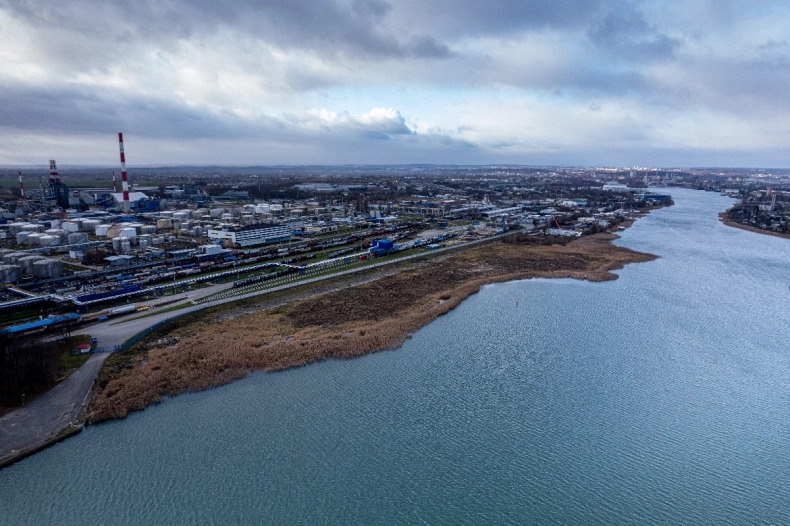
An oil and fuel reloading terminal will be built by the Orlen Group on the refinery's quay at the Martwa Wisła river.
Following the merger with Lotos, Orlen announced investments at the Gdańsk refinery. It plans to build a sea terminal on its quay on Martwa Wisła river which will transship base oils, marine fuels, and fuel bio-additives. An annual capacity of more than half a million tons is expected from the terminal when it is launched in 2025. Ultimately, however, it may exceed 2 million tons per year.
A contractor has already been identified for the investment. A consortium of companies led by NDI, which has extensive experience in hydro construction, and which also includes Biproraf, BPBM Projmors, and Dipl. Ing. Scherzer, will undertake the construction. The investment will be made to a "turnkey" standard and will be delivered in a condition that will allow the investor to use it immediately.
– As a result of investing in our infrastructure, we increase our independence from external partners and, therefore, generate significant savings in the logistics area of our business. As an instrumental part of this project, we will utilize the abilities of local companies – read the official announcement from PKN Orlen's president Daniel Obajtek.
Rail is currently used for transporting products between the Gdańsk refinery and external transloading points. In addition to alleviating the railroad siding at the plant through the construction of the transshipment terminal, the terminal will also enhance the profitability and security of biocomponent supplies for the manufacture of fuels (biogasoline and biodiesel), as well as bio esters applied as a component in diesel fuel or UCOME, a waste-derived biofuel. However, the terminal will also be used for the export of marine fuels and base oils from the refinery.
The quay will be able to accommodate ships up to 130 meters in length, 17.6 meters in width, and 5.8 meters in draft. It is estimated by Orlen that a tanker with a length of approximately 100 meters can transport as much cargo as approximately 90 rail tank cars. The quay will have two reloading berths for servicing tankers, each equipped with four nozzles. The quay itself will be accompanied by the necessary infrastructure such as buildings with facilities, pipelines and other underground infrastructure, and steel flyovers. Around 130 ships are expected to pass through the terminal each year.
– We are facing another engineering challenge – a very complex, technologically sophisticated project. Our work is carried out in a critical area, namely the area of the Gdańsk refinery. The nature of the work requires us to plan very carefully and carry out the work according to the highest safety standards. In order to implement the project, we have assembled a consortium with experienced and complementary entities, and as the lead, we will ensure smooth cooperation between all participants in the process that is beneficial to the project – said Małgorzata Winiarek-Gajewska, President of the Management Board of the NDI Group.
At the same time as the terminal is being built, the hydrocracking oil block (HBO) is being constructed for the production of high-quality oils. Groupa Lotos specialists planned and prepared both investments, which were continued after the merger with Orlen. It is estimated that half a billion zlotys will be spent on the construction of the terminal.


